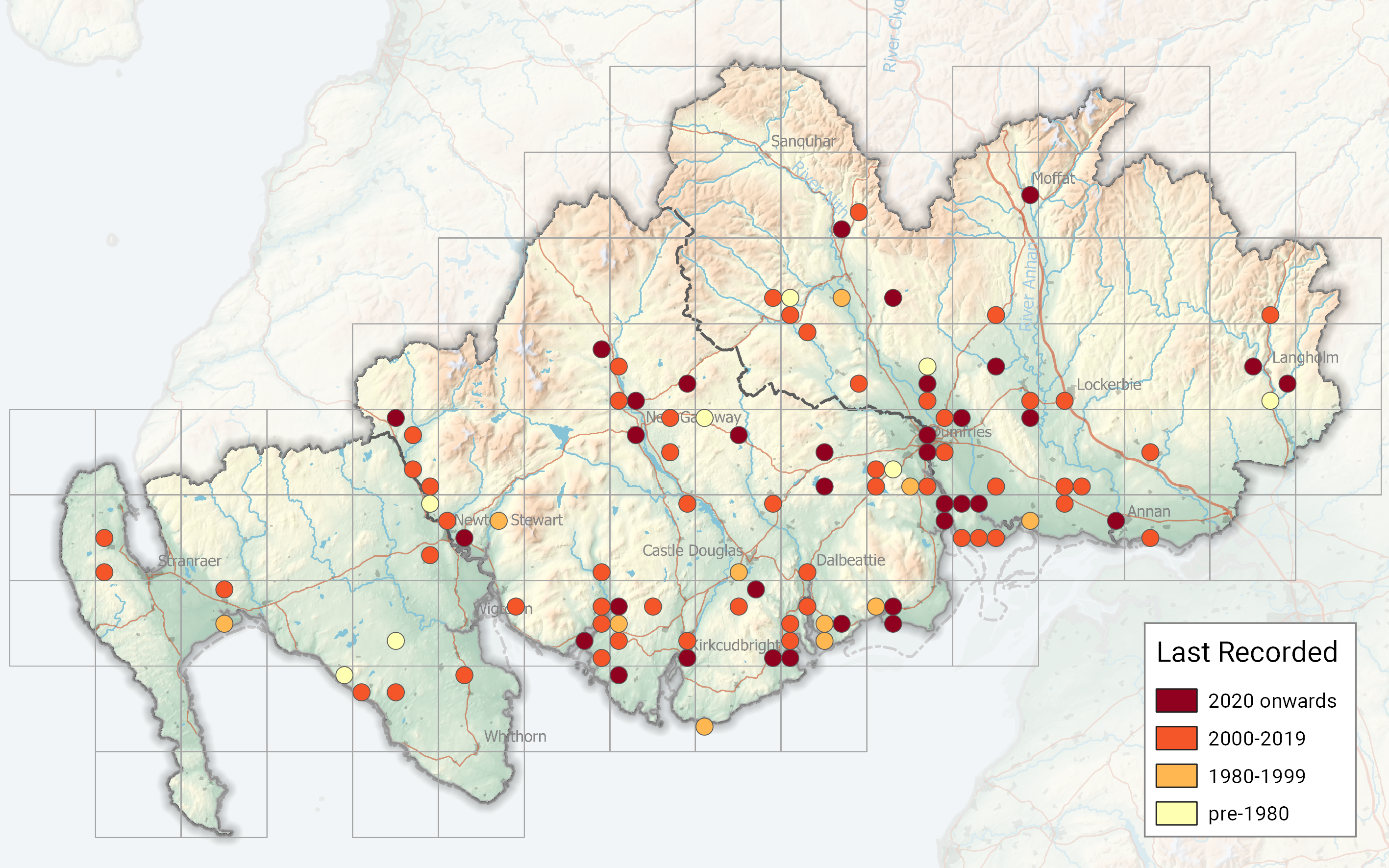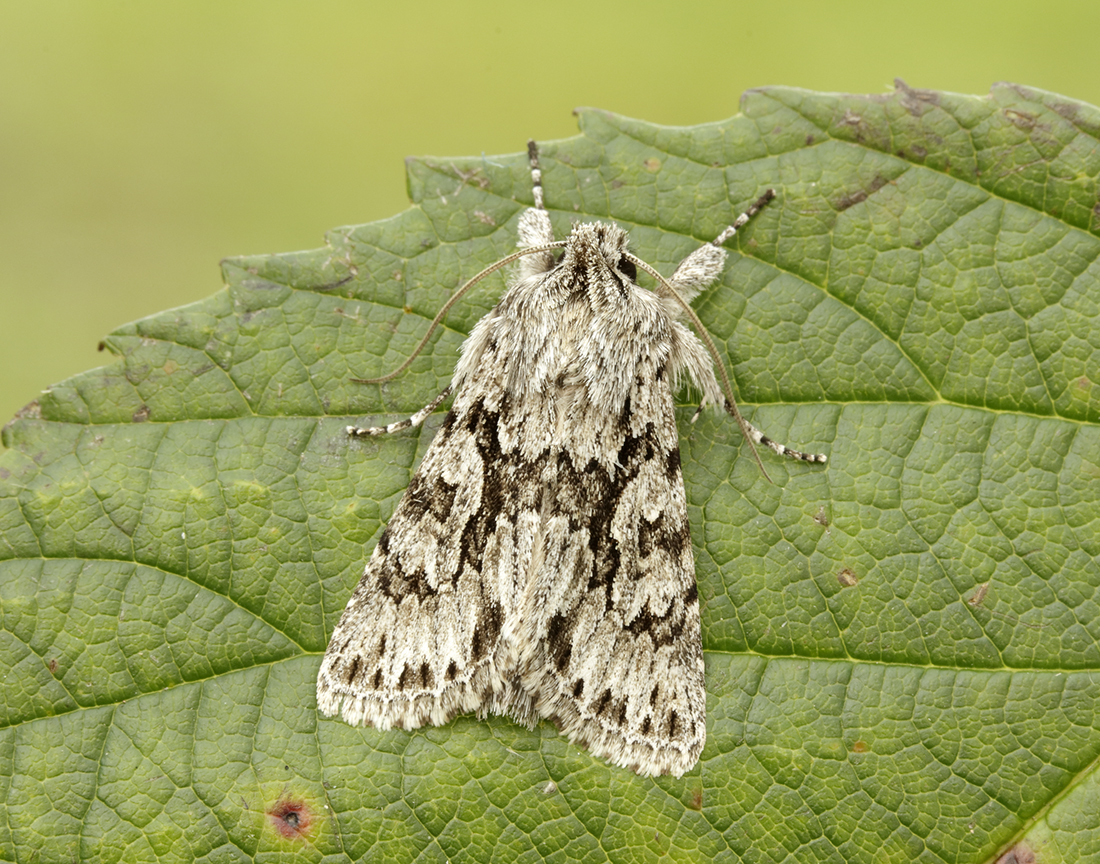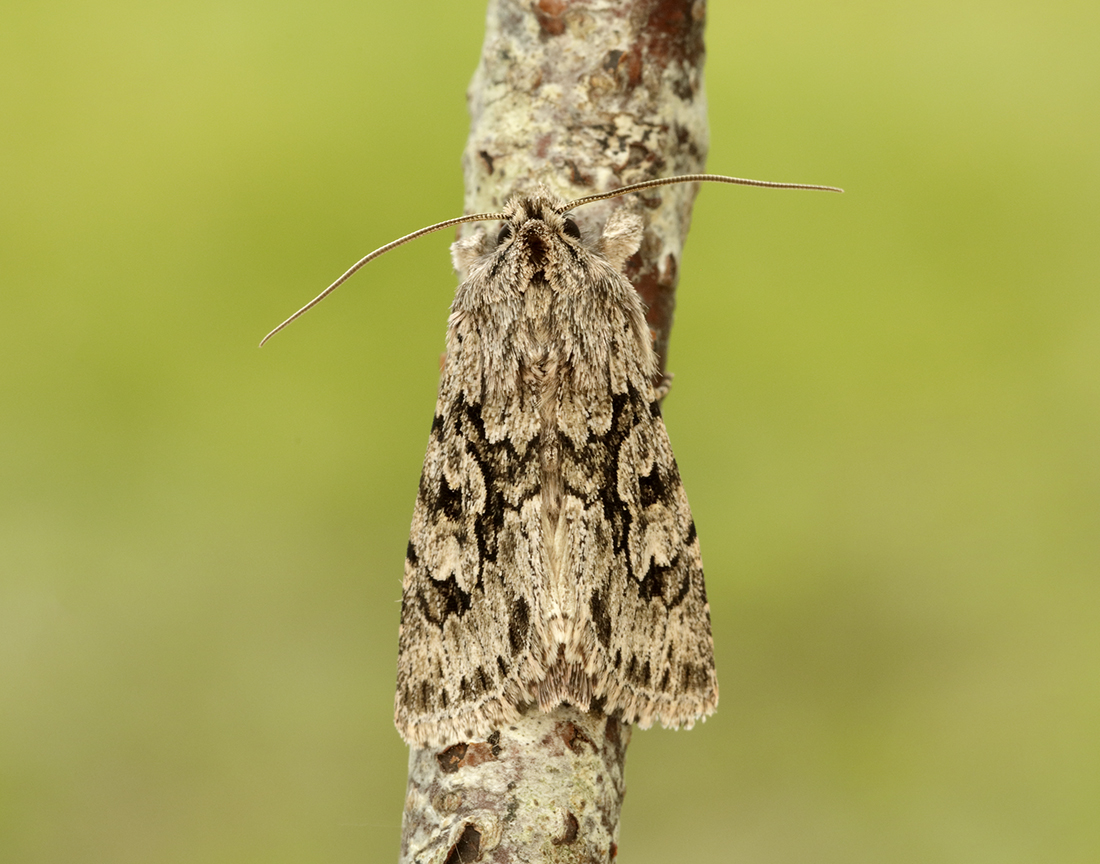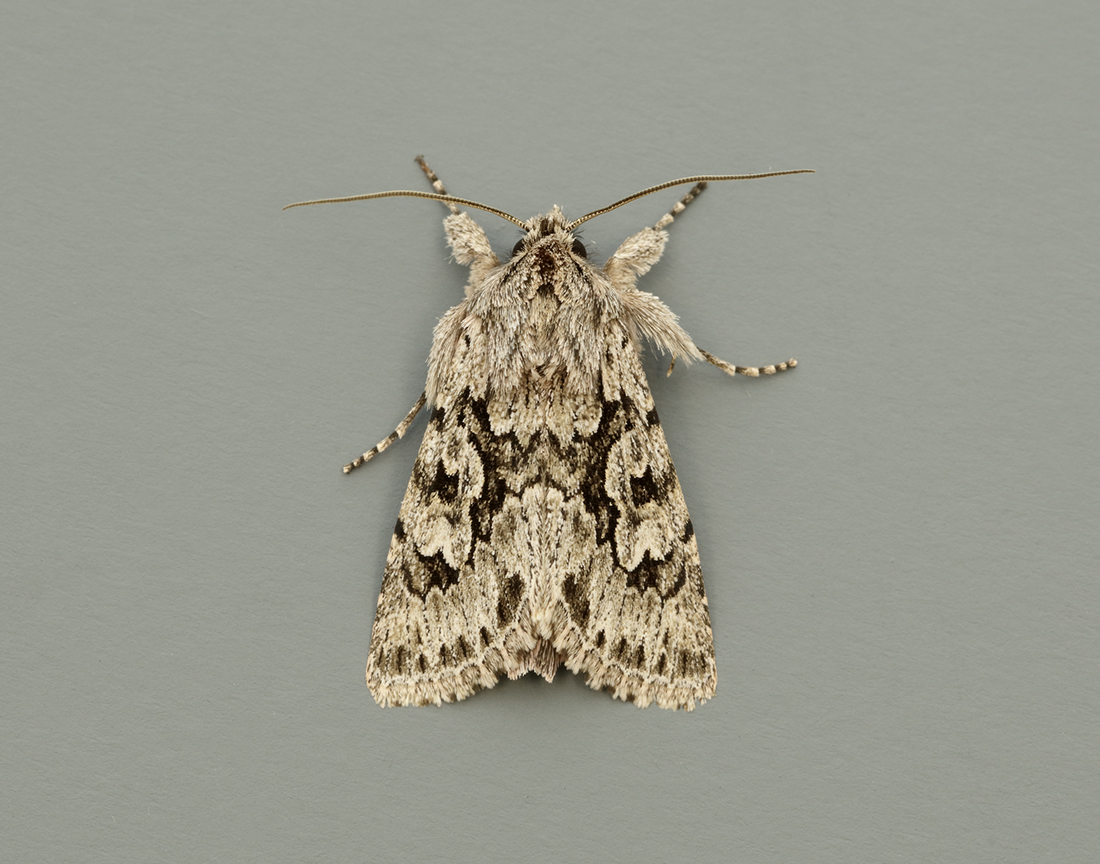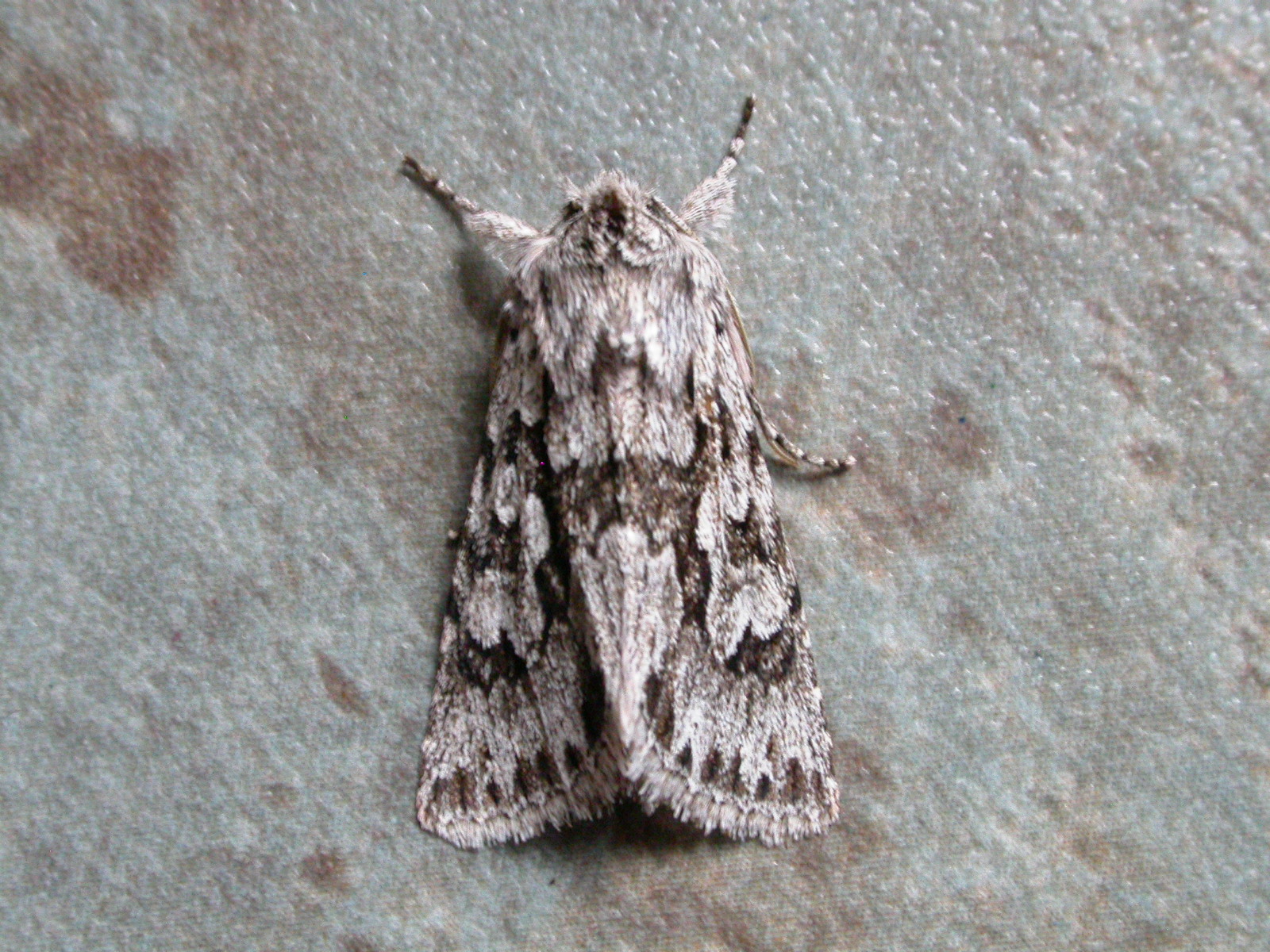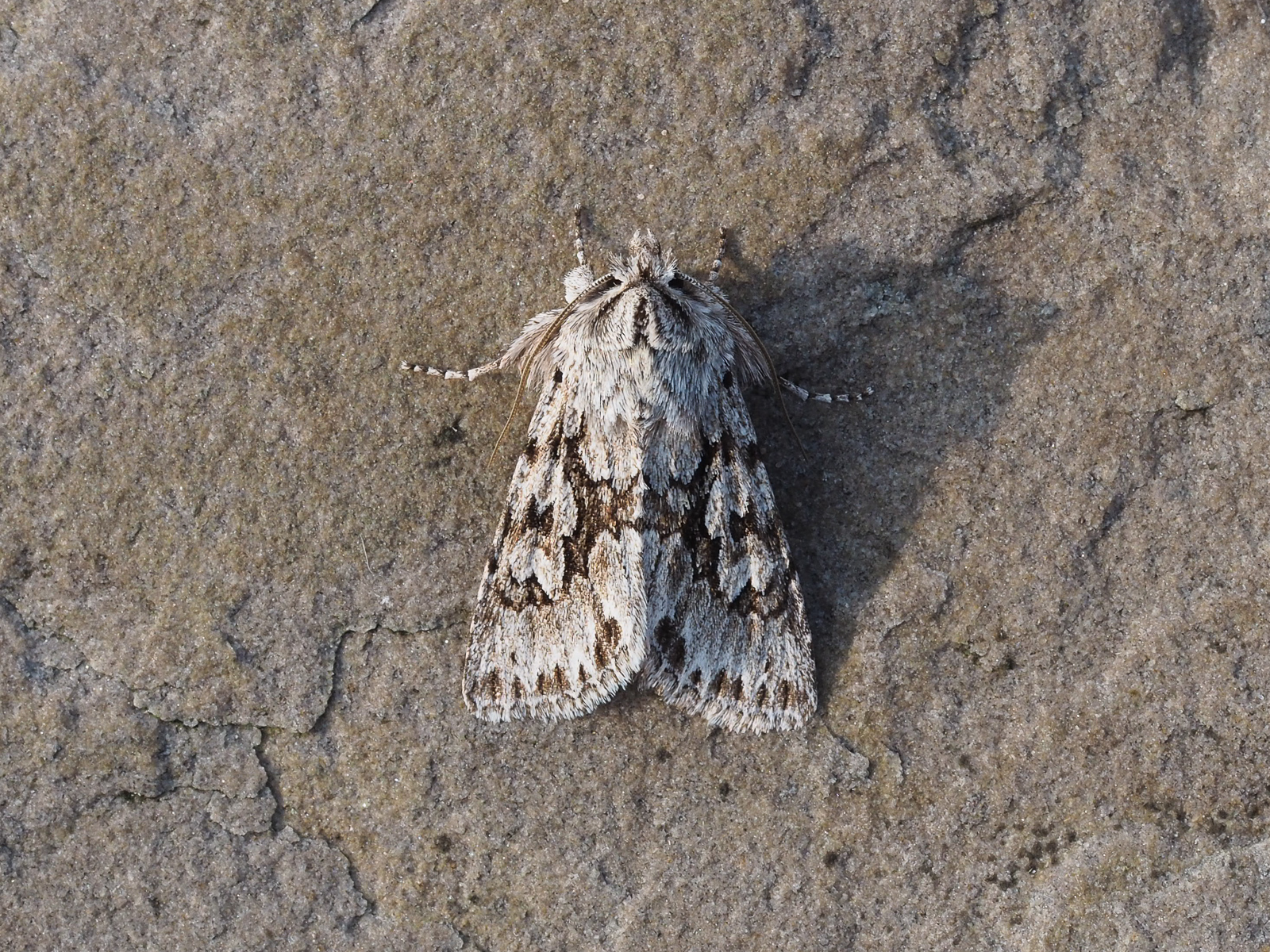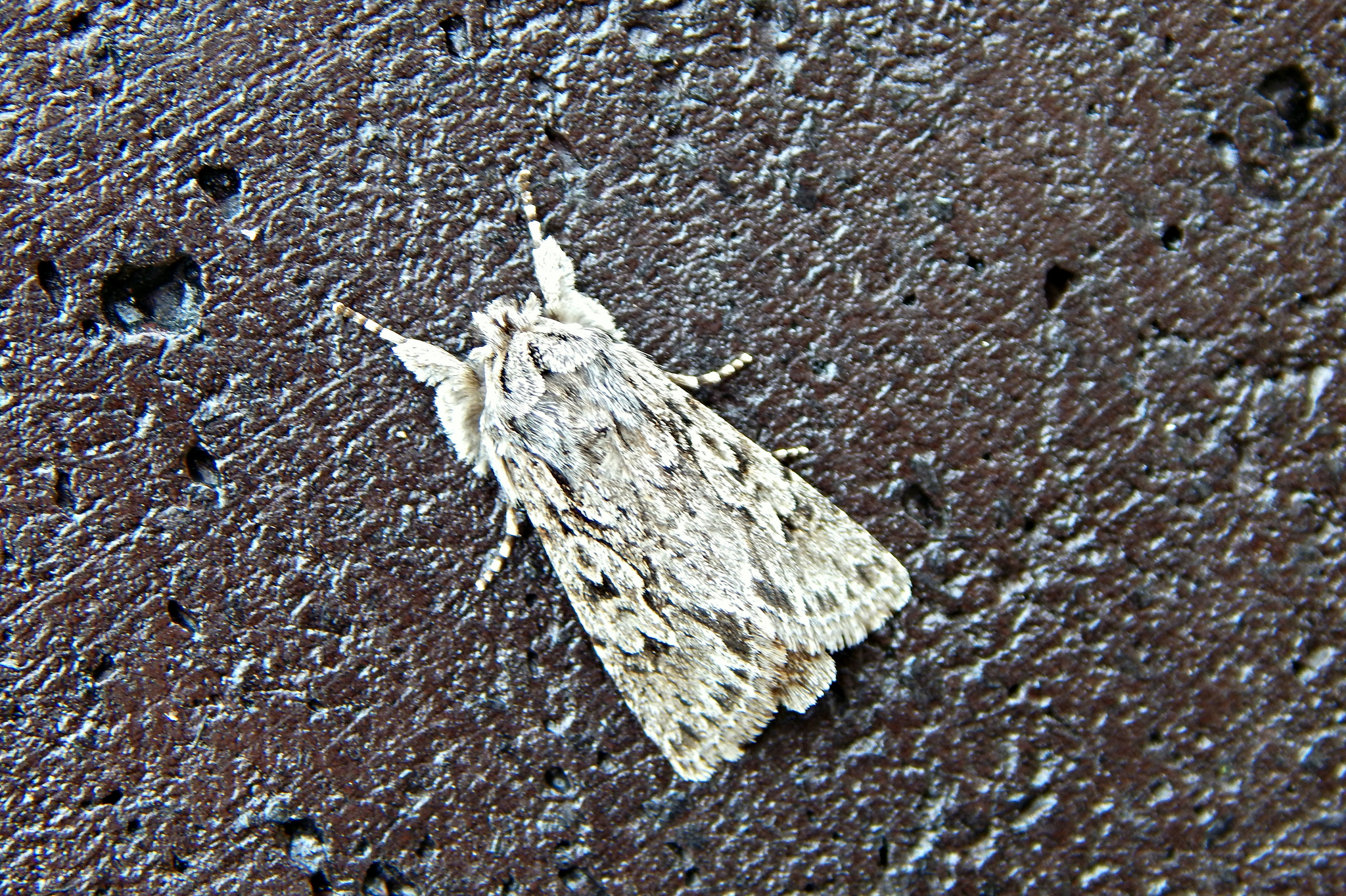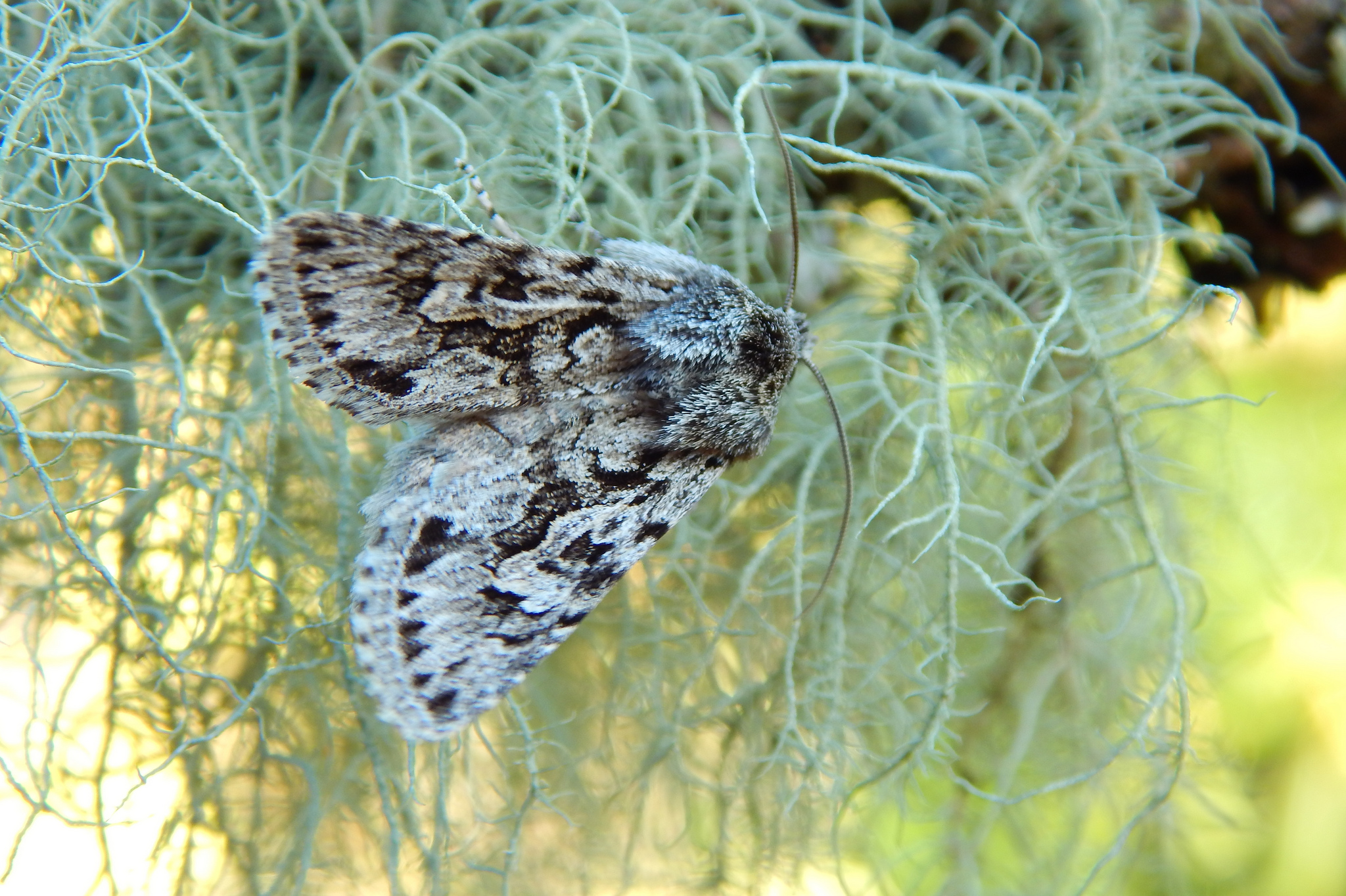See also Moth of the Week (18/04/2020)
Identification
The rough textured ash-grey forewing with pale kidney-mark and two ovals is diagnostic.
Recording Method.
Attracted to light.
Life cycle
One generation. Overwinters as a underground pupa. The egg is laid singly on the foodplant, with the larvae appearing during April to June, feeding at night and resting by day.
Larval foodplants
Both wild and cultivated honeysuckles.
Habitat
Broadleaved woodland, gardens, hedgerows and scrubby areas.
History
Gordon (1913) had three records for Wigtownshire: one on sallow blossom, Corsemalzie, on 2nd April 1896; one at rest on a roadside rock at Alticry Glen on 9th April 1906; and one came to light at Corsemalzie on 1st May 1911. Cunningham (1950) in the Transactions had found the first for Kirkcudbrightshire at sallow in the Long Wood on 23rd March 1950. Sir Arthur Duncan then added it to the Dumfriesshire list by recording it at Gilchristland on 19th April 1941 and 10th April 1946.
In 1974 there were a series of records from Irvine House Lodge at Auchenrivock (VC72). From 1975 to 1989 there were forty records from four of the Rothamsted stations, with Caerlaverock, Bridge of Dee and Newton Stewart not recording it.
Then, during 1990-2010, nearly 200 records were recorded from widely scattered sites across the region, but more so in Galloway.
Form ab. rosea Tutt
One of this form was trapped at Carsluith (VC73) on 18th March 2007.

